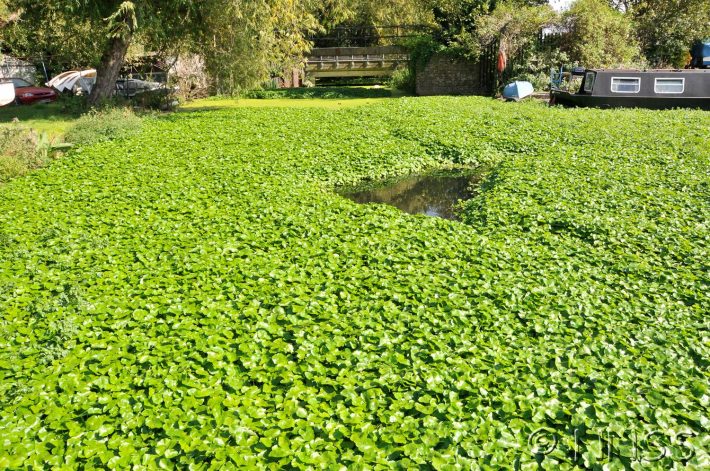The first EU list of 37 invasive alien species comes into force
On the 13 July 2016 the European Commission adopted the first EU list of 37 invasive alien species (IAS), the associated restrictions and obligations of which will come into force on 3 August 2016.

This is a much welcomed step towards halting biodiversity loss, and helping reach the UK’s commitment to the Bern Convention and the Convention of Biological Diversity; specifically Aichi Target 9.
37 invasive alien species of European Union concern
The 37 species that have been listed meet the criteria set out in Article 4 of the Invasive Alien Species Regulation, which relates to their invasiveness and ability to establish in several Member States. The validity of the evidence supplied against each of the criterion has been established by scientifically robust risk assessments, and approved by a Committee of Member State representatives. All 37 species will now be subject to the Restrictions set out in Article 7 of the Invasive Alien Species Regulation. These include restrictions on keeping, importing, transporting, selling, exchanging, breeding, growing or releasing to the environment. More information about what these restrictions mean can be found on the GB non-native species secretariat’s website.
What does this mean in light of Brexit?
The EU Regulation on invasive alien species came into force on 1 January 2015, and at its core is taking a preventative approach to invasive alien species with the development of the list of IAS of Union concern (i.e. the list coming into force today). The Invasive Alien Species Regulation will continue to apply while the UK remains a member of the EU. Therefore, this includes the restrictions and the requirement to work cooperatively with EU member states.
Even if the UK does leave the EU, the Invasive Alien Species Regulation could be transposed into UK legislation. If not? Then there is an opportunity to start with a clean slate, learn from past lessons and set out new legislation for tackling invasive species in the UK. Whatever the outcome for the IAS Regulation, it is clear that the UK will need to continue to work closely with neighbouring countries to prevent the inflow and outflow of invasive alien species.
What next?
This list of 37 species is a starting point and the list will be regularly updated as Risk Assessments are completed and potentially damaging species are identified. Therefore, there is still work to be done to ensure the list of union concern truly reflects the scale of problematic invasive alien species. The list of species is included below – get in touch and let us know what invasive alien species are missing and should have a risk assessments carried out. Not forgetting the species must meet the criteria set out in Article 4 of the Invasive Alien Species Regulation including that they are alien to whole of the EU; they are capable of establishing a viable population and spreading; they are likely to have a significant adverse impact on biodiversity, related ecosystem services, and may also have an adverse impact on human health or the economy.
LIST OF INVASIVE ALIEN SPECIES OF UNION CONCERN
Plants: American Skunk cabbage; Asiatic tearthumb; Curly waterweed; Eastern baccharis; Floating pennywort; Floating primrose; Green cambomba; Kudzu vine; Parrot’s feather; Persian hogweed; Water hyacinth; Water primrose (2 species); Whitetop weed
Animals: Amur sleeper; Asian hornet; Small Indian mongoose; Bryant’s fox squirrel; Chinese mitten crab; Coypu; Eastern crayfish ; Grey squirrel; Indian house crow; Marbled crayfish; Muntjac deer; North American bullfrog; Pallas’s squirrel; Racoon; Red eared slider; Red swamp crayfish; Ruddy duck; Sacred ibis; Siberian chipmunk; Signal crayfish; South American coati; Topmouth gudgeon; Virile (northern) crayfish
Like what we stand for?
Support our mission and help develop the next generation of ecologists by donating to the British Ecological Society.